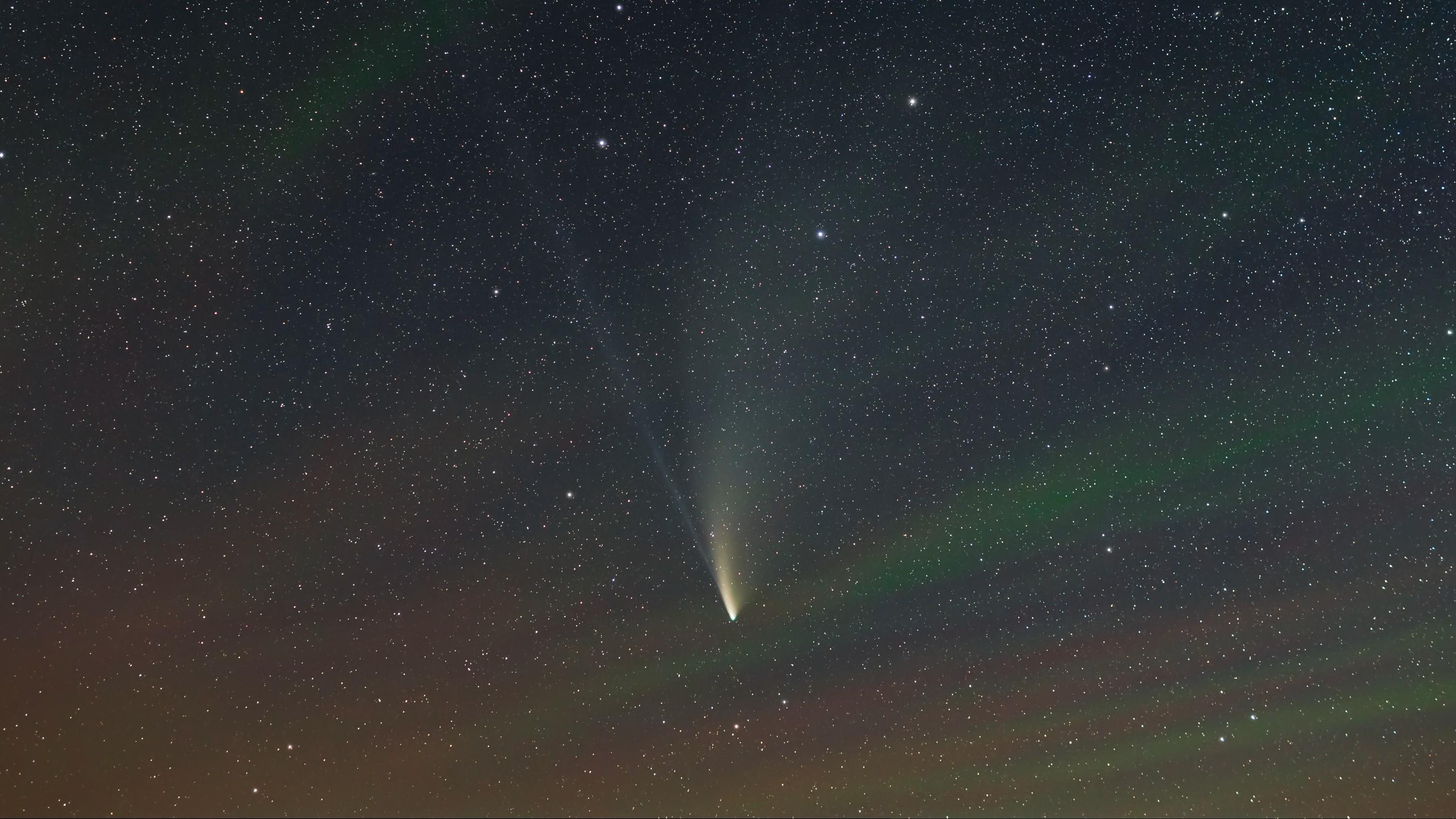Rare green comet not seen since the Stone Age will zoom overhead tonight. Here's how to watch.
The last time comet C/2022 E3 passed by Earth, modern humans were mingling with Neanderthals.

On Feb. 1, a comet called C/2022 E3 (ZTF) will pass by Earth for the first time in 50,000 years, meaning the last time it cruised by our planet, Homo sapiens were still sharing the planet with Neanderthals. And according to calculations from astronomers, the comet will never come back.
But you don't have to wait until February to see the comet; there are a few ways to spot it before its closest approach, starting today.
On Thursday (Jan. 12), the comet will be at perihelion, its closest point to the sun. When comets pass close to the sun, their ice sublimates — meaning it turns into a gas, skipping the liquid phase. This sublimation creates a temporary atmosphere, called a coma, that glows from our point of view.
Starting in the predawn hours of Jan. 12, the comet could be visible near the northern sky constellation Corona Borealis and then will move westward as time goes on, according to Live Science's sister site Space.com. If viewing conditions aren't ideal in your area, you can tune in to a livestream provided by the Virtual Telescope Project, which will start Jan. 12 at 11 p.m. ET.
On the nights of Jan. 26 and 27, the comet may be visible just east of the Little Dipper's bowl. Experts expect the comet to be visible to the naked eye by the third week of January. By Feb. 1, when the comet makes its closest approach to Earth, at 28 million miles (45 million kilometers) away, it will be near the constellation Camelopardalis. A few days later, on Feb. 5 and 6, the comet will pass to the west of the star Capella and then enter the constellation Auriga.
Unfortunately, there's no guarantee you'll be able to see the comet. If you live in an area with high light pollution, the comet will be much too faint to see with the naked eye. Even in areas with less light pollution, the closer the comet comes to Earth, the more its light will seem to diffuse over a larger area. Your best bet may be to seek an area with dark, clear skies and avoid using telescopes and binoculars, according to Space.com; your eyes should be just fine.
Comet C/2022 E3 was discovered by Frank Masci and Bryce Bolin in March 2022. The astronomers spotted the comet using the Zwicky Transient Facility at the Palomar Observatory in Southern California. At the time of its discovery, the comet was within the orbit of Jupiter, nearly 400 million miles (643 million km) from the sun.
Sign up for the Live Science daily newsletter now
Get the world’s most fascinating discoveries delivered straight to your inbox.

JoAnna Wendel is a freelance science writer living in Portland, Oregon. She mainly covers Earth and planetary science but also loves the ocean, invertebrates, lichen and moss. JoAnna's work has appeared in Eos, Smithsonian Magazine, Knowable Magazine, Popular Science and more. JoAnna is also a science cartoonist and has published comics with Gizmodo, NASA, Science News for Students and more. She graduated from the University of Oregon with a degree in general sciences because she couldn't decide on her favorite area of science. In her spare time, JoAnna likes to hike, read, paint, do crossword puzzles and hang out with her cat, Pancake.









